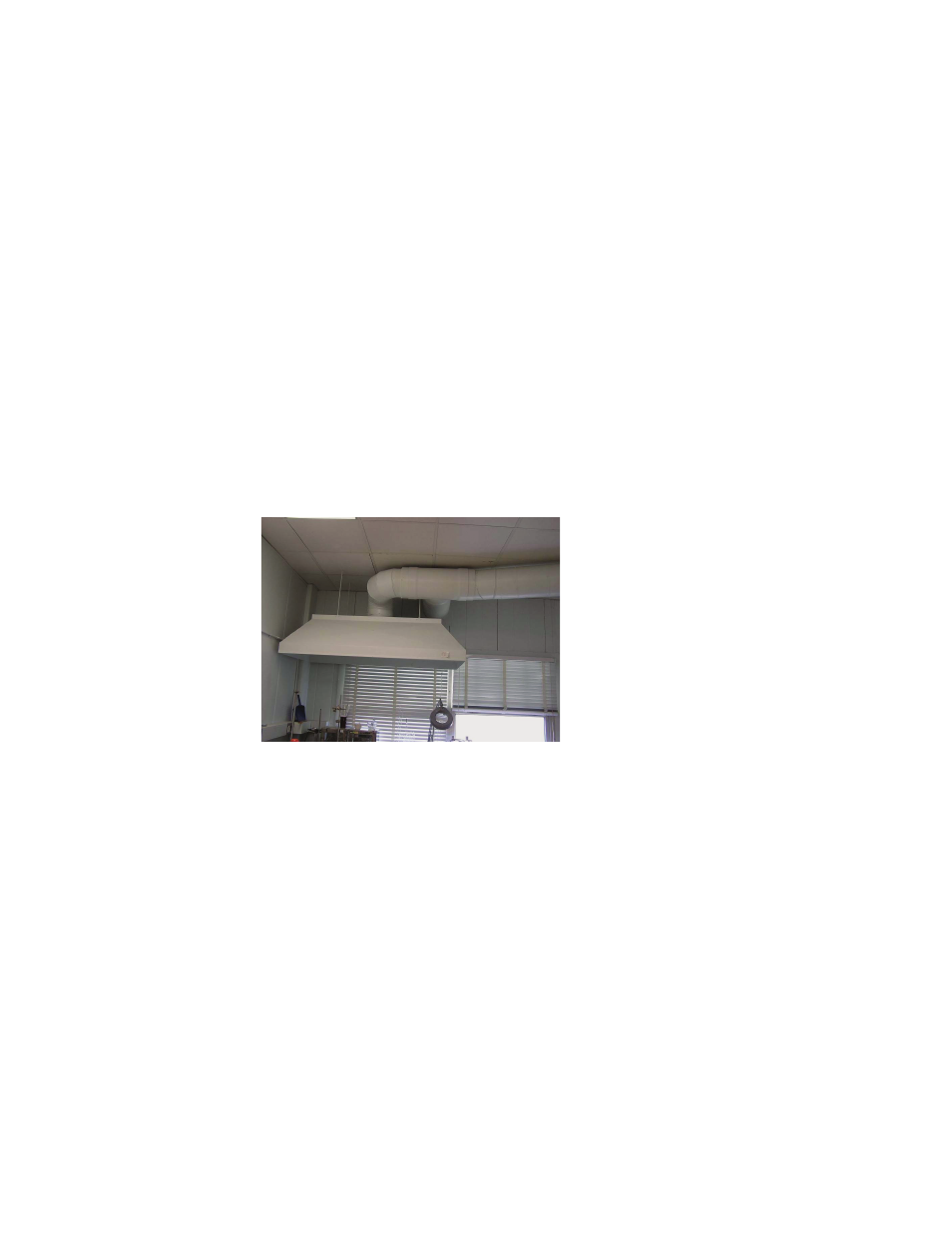Retrotec USACE User Manual
Page 154

D24 ENERGY & PROCESS ASSESSMENT PROTOCOL
ventilation is best applied to situations where the location of the contaminant release
is moving throughout the space—e.g., in an automobile parking garage or a furniture
manufacturer, where outgassing of solvents from glues, stains, and varnishes is an
issue. Dilution ventilation should not be applied where a local type of exhaust system
can be properly used, such as in situations involving close capture hoods, exhaust
booths, and total enclosures (Figure D39). Dilution ventilation requires good mixing
of the contaminant with the incoming clean air and then removal of the mixed air
from the space to allow additional clean air can enter. The amount of clean air must
be several times the amount required for perfect mixing to occur, because there
can always be locations in the space where mixing is less than desired, which would
result in too high a concentration of the contaminant. The use of dilution ventilation
where local exhaust could be applied consumes excessive fan energy and extra air
tempering energy—e.g., using 141.6 m
3
/minute (5,000 CFM) to dilute the exhaust
from one automobile’s exhaust compared to 5.7 m
3
/minute (200 CFM) to remove
exhaust with close capture tail pipe hose.
D.2.1.11 Use of Canopy Hoods to Control Process Emissions
(Ineffi ciency)
Figure D40. Canopy hood over chemical
equipment.
Canopy hoods (Figure D40) are an ineffective method for removing contami-
nants from a space except when the contaminant is in a heated air plume that
is naturally traveling upwards. In this case, the canopy hood, being located over
the process, is in the correct position to capture the contaminant and remove
it from the space. In other situations, canopy hoods work poorly because they
are located too distant from the contaminant source; either the air movement
in the space blows the contaminant out from underneath the canopy hood,
or the contaminants are released from the process with a velocity that takes
them from underneath the canopy hood. Canopy hoods are convenient to in-
stall. They do not get in the way of process space requirements. They can be
placed above the process, where they do not interfere with normal operations.
The problem is that they do not work very effectively, and extra exhaust air is
needed to control contaminants. As a result, they use excess fan motor energy,
and extra energy is needed to temper the supply air.
